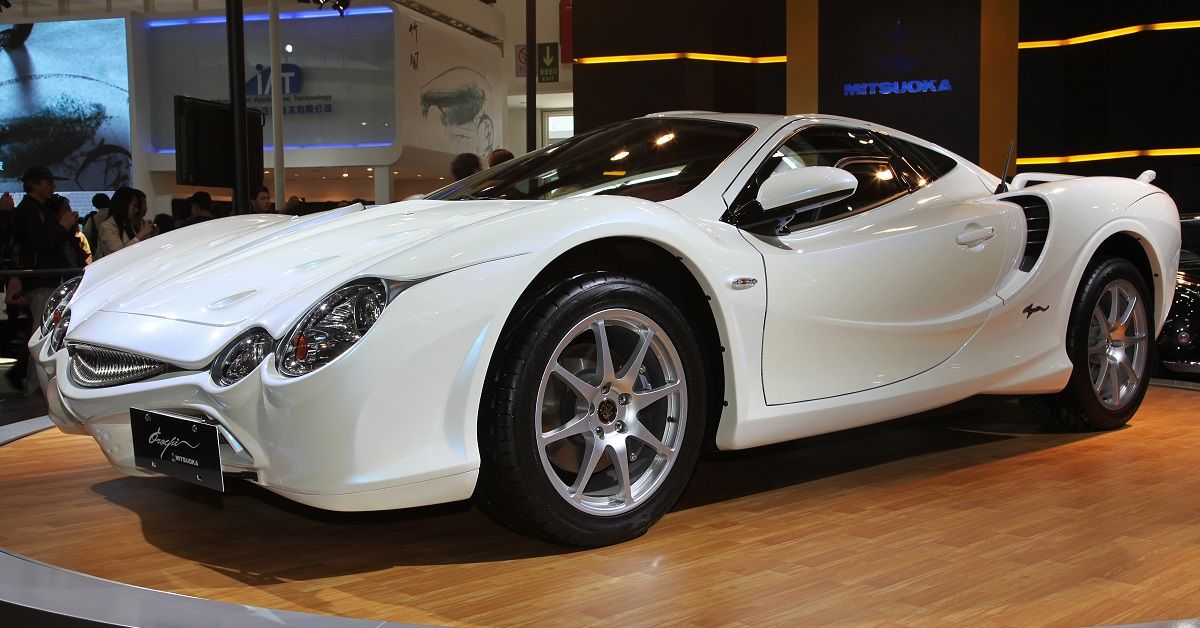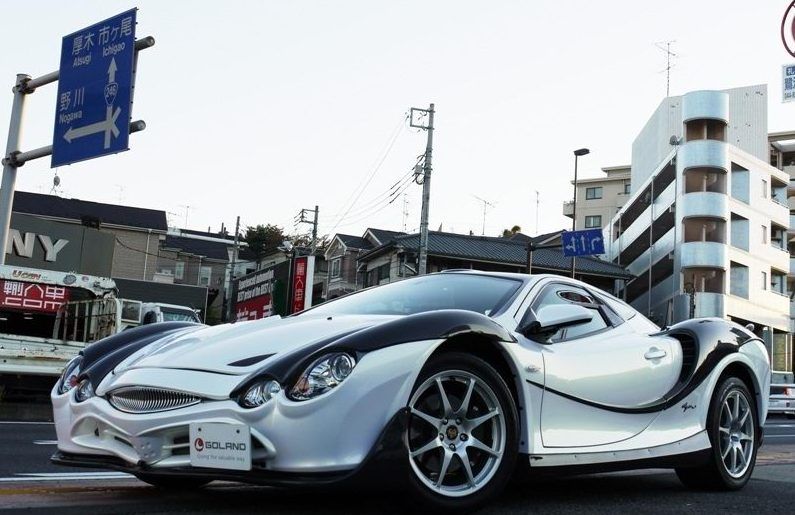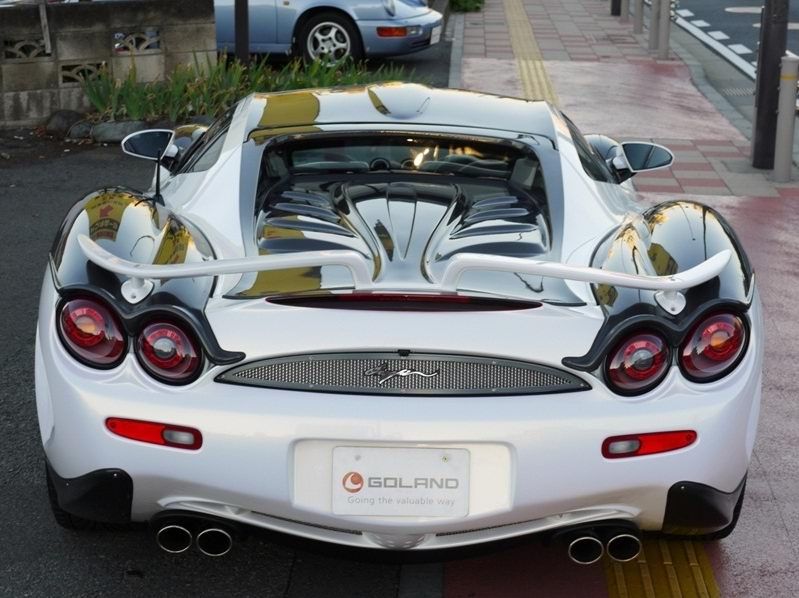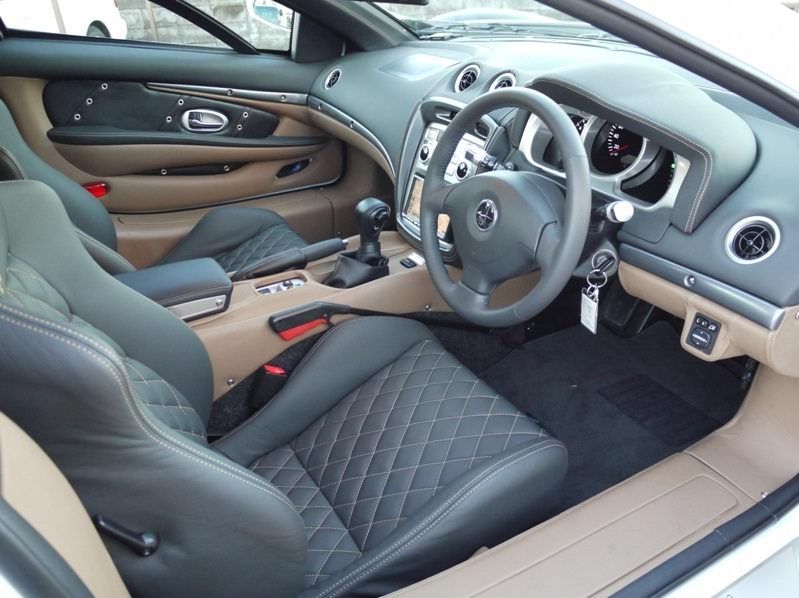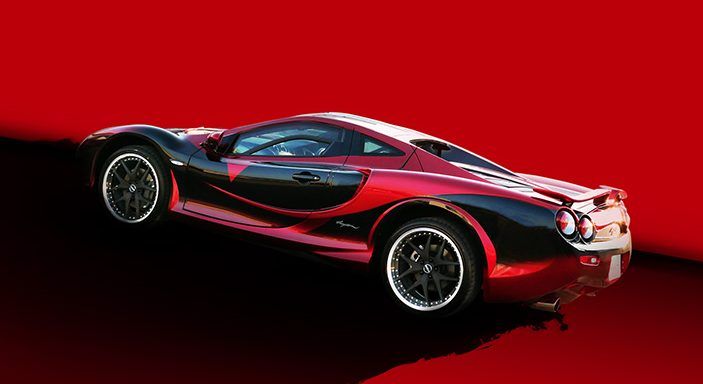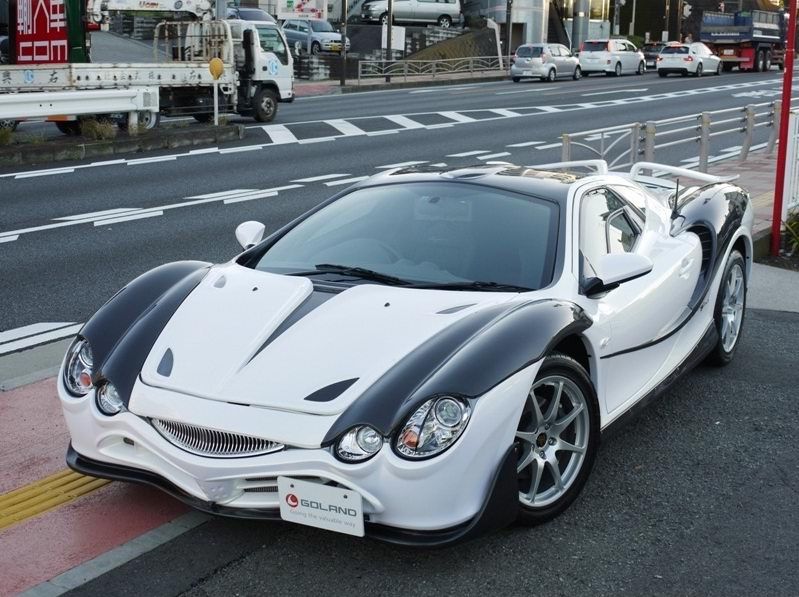When it comes to Japanese carmakers, you probably know the big ones. Toyota, Honda, Subaru, they're all names we've become well accustomed to in North America, lauded for their affordable and reliable cars that swooped in during the Gas Crisis, and evolved with the industry as stand-out examples of how to make a proper mass-market vehicle.
Within Japan, though, many vehicles were never made for export, known as JDM, and have never been seen on overseas roads. It's not just models either, as entire brands exist that are nearly unheard of outside Japan, and Mitsuoka is one of them.
The 10th largest Japanese carmaker, Mitsuoka, is rather obscure outside Japan but a cool and interesting one to those who know them. Rather than developing their own models from the ground up, Mitsuoka is an example of modern-day coachbuilding, essentially taking an already built car and outfitting it with a completely new, custom-made body along with other tweaks. Doing so with normal cars like Nissans and Toyotas, Mitsuoka's lineup is a fascinating blend of, often British-inspired, classic styling poured onto modern daily drivers.
An exception to that, their most insane and unique-looking car is this, the Orochi. Described by Mitsuoka as a "fashion supercar," the Orochi is one of their only uniquely developed vehicles and rather famous even outside Japan for its polarizing, often considered horrendously ugly, undeniably attention-grabbing looks.
Legendary Origins
Having made several custom cars that paid homage to vintage models in the '90s, Mitsuoka created the Orochi in the early 2000s as a completely unique and original design, shocking everyone who laid eyes on it with its radical styling and supercar layout. Unveiled as a concept at the 2001 Tokyo Auto Show, the Orochi truly did have supercar roots, with its concept form being based on the iconic Honda (Acura in North America) NSX.
Those looks though did have an inspiration, namely, in Japanese mythology of the eight headed, eight tailed "Yamata No Orochi" dragon legend dating back to over 1,000 years ago. Keeping with this theme, the Orochi's debut saw a traditional Kabuki dance take place around it, driving home the connection to Japan's past. In 2005, another concept Orochi was shown, this time as a convertible called the "Orochi Nude Top," and soon after, production was announced to start in 2006.
Hitting the streets of Japan in 2007, the Orochi made it to reality mostly unchanged from its concept form - save for the NSX basis, and truly fulfilled its intended purpose. While it may seem like the Orochi should be a fast supercar, it isn't. Instead, Mitsuoka designed and made it with the main goal of being an exclusive, unique, and attention-grabbing cruiser, and even if you find it ugly like most people do, it attracts attention like few genuine supercars could ever dream of - Mitsuoka themselves even stated that the Orochi is “the car to ride to gather attention from everyone." Produced up until 2014, the Orochi lasted for seven years fulfilling this purpose, and indeed was exclusive with its planned production of just 400 cars.
Wild Styling, Subdued Driving
While the Orochi perfectly fills the role of attention grabbing fashion statement, the supercar looks fall short when it comes to actual performance, as comfort and easy driving characteristics took priority in its development. Like a proper supercar, the Orochi carries over the mid-engine layout from its NSX based concept, but rather than using the uniquely developed Honda V6; a Toyota V6 took its place in production.
A 3.3 L V6 known as the 3MZ-FE, this engine makes 230 hp and could also be found in cars like the Toyota Sienna and Camry of the mid-2000s. Also pairing to a rather boring Toyota component, only a 5-speed automatic could be had in the Orochi, though it did send power to the rear wheels. Weighing in at over 3,400 lbs, the Orochi isn't horribly slow, but with a 0-60 mph time of 6.7 seconds and a top speed of 111 mph, it isn't exactly fast either.
Performance aside, the Orochi's mechanical side does have some more interesting aspects to it, the first of which is the chassis. Keeping the same mid-engine layout as the NSX its concept was based on, the Orochi's chassis is a unique steel spaceframe developed and made by Mitsuoka, unlike their other work that focuses on the body only. Wrapping around that chassis, the wildly styled body is made from fiberglass-reinforced plastic and is made by hand.
Packing double-wishbone suspension front and rear, with ventilated disc brakes all around, the Orochi seems like it should at least have a little bit of sportiness to it, but that's not really the case. Described as a soft, heavy, and poor handling car, the Orochi is neither fast nor sporty, with a rather boring engine, an exhaust note that's decently throaty but not exactly exotic - again, this is not the car's point, though.
A Leather Wrapped Cockpit
From the outside, the Orochi is as unique and exotic as a car could possibly look, but when it comes to the interior, that's not quite the case. While nice, it's just boring compared to the exterior. Coming standard with full leather upholstery, the Orochi has some exotic touches like the seat patterning, as well as rivets along with the dashboard trim and door cards, but overall has a functional layout in line with its intended home cruising around cities.
Equipment is similarly decent, though somewhat typical of a late 2000s car's spec sheet. Included in this, the Orochi came standard with Panasonic HDD navigation, automatic air conditioning, HID headlights, power door mirrors, an immobilizer, but not much else. Customization options were available and included bits like Alcantara trim. Not very practical, though, the Orochi lacks serious cargo storage.
Special Editions Galore
When it comes to the Orochi's most interesting aspects, though, the several special editions it had are just as wild as the car itself and riff on the fashion-forward purpose of the car. This include:
Orochi Kabuto:
Debuting in 2007 as a concept, the Orochi Kabuto entered production in 2009 as a special edition of just five cars. Differing with carbon fiber bodywork, as well as an aggressive body kit and spoiler, the Kabuto, like the other special editions, retained all the mechanical aspects of the standard Orochi and focused on looks.
Orochi Zero:
Debuting in 2008, the Orochi Zero was meant as a cheaper version of the Orochi, ditching a variety of metal trim components and changing out bits of the actual leather upholstery for a synthetic type.
Orochi Gold Premium:
Somewhat of an opposite to the cheaper Zero, the Gold Premium edition came out in 2010 and consisted of a new spoiler, a new 4-pipe exhaust system, gold paint accents, as well as Alcantara seats and steering wheel; only 20 were made.
Orochi Final Edition:
A limited-edition of 5 units made for 2014, the end of Orochi production, the Final Edition consists of unique paint, with 3 of them done up in Gold Pearl, and 2 in "Fuyoru" purple, exclusive dark wheels, a new spoiler, and unique interior colors.
Orochi 7-Eleven Evangelion Edition:
By far the wildest of all Orochis, this edition was also made to send off the Orochi in 2014. Only sold at 7-Eleven stores (yes, the familiar convenience store) in Japan, this edition's most notable difference is the chaotic multi-color paint scheme inspired by the hit Anime series Neon Genesis Evangelion, and also carries with it the Gold Premium edition's changes, only 11 were made.
Pricing
A rather expensive fashion statement, the Orochi's debut price was equivalent to $89,000 USD in 2007 and rose to around $125,000 in 2014, with the various special editions both increasing, and decreasing (in the Zero's case) that price slightly. A rare, Asian market-only vehicle, you can't import an Orochi to the USA until at least 2032 thanks to the 25 Year Rule, but if you happen to live somewhere, it can be imported to a used Orochi hovers around the $100,000 mark.

